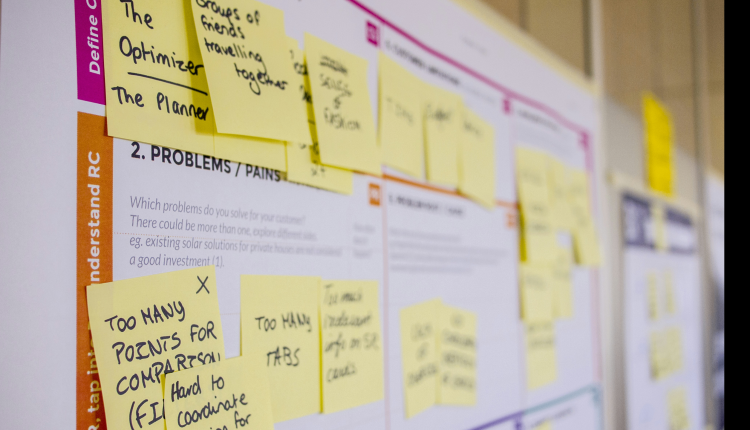AI Transforms Process Mapping: How New Smart Tech Is Changing Business Analysis
Key Takeaways
- AI process mapping automates data collection and visualization, cutting manual documentation time while boosting workflow efficiency.
- Smart mapping technologies deliver nearly error-free process documentation through real-time data processing and machine learning algorithms.
- AI-powered tools can anticipate workflow bottlenecks before they happen, enabling preventive rather than reactive problem-solving.
- According to Accenture, generative AI will affect 40% of working hours, helping organizations optimize resources and productivity.
- Training in modern mapping platforms from companies like Elisto are helping businesses shift from static diagrams to active, real-time process visualization.
Process mapping has been fundamental to business efficiency and improvement initiatives for years. The conventional method—manually documenting workflows through interviews, observations, and whiteboard sessions—worked well for decades. But now, artificial intelligence has completely changed this critical business function.
AI-powered process mapping marks a fundamental shift in how organizations visualize, analyze, and optimize their operations. Elisto Ltd provides technological solutions in this growing field, where businesses can use AI to create functional process maps with exceptional insights. Unlike conventional mapping methods that only capture static snapshots, AI constantly monitors workflow execution, spots inefficiencies, and suggests improvements in real time.
How AI Process Mapping Outperforms Traditional Methods
Machine Learning & NLP Automation
Traditional process mapping demands intensive manual effort. Business analysts typically spend weeks interviewing stakeholders, watching work being performed, and carefully documenting each step. This approach isn’t just time-consuming but also susceptible to human error and subjective interpretation.
AI process mapping uses machine learning algorithms and natural language processing to automate the entire data collection phase. The technology analyzes existing documentation, tracks actual system usage, and even interprets communication between team members to build accurate process flows automatically. While traditional mapping might take months to complete, AI-powered solutions can generate thorough maps in days or even hours.
Real-Time Data Processing
Traditional process mapping provides just one snapshot of a workflow at a specific moment. This static representation quickly becomes outdated as processes change, requiring constant manual updates that rarely match actual changes in the business.
AI process mapping functions continuously, processing real-time data from enterprise systems, user interactions, and digital touchpoints. This active approach ensures process maps are always current, showing the actual state of operations rather than an outdated version. When a process changes—due to system updates, new regulations, or employee innovations—the AI-powered map updates automatically.
Predictive Workflow Intelligence
Conventional process maps are descriptive, showing only what happens in a workflow. They provide minimal insight into potential issues that might arise or how processes might perform under different conditions.
AI-driven process mapping adds predictive intelligence to workflow visualization. By analyzing historical data and patterns, AI can anticipate bottlenecks before they occur, predict the impact of suggested changes, and recommend optimization opportunities. This shifts business analysis from reactive to proactive, allowing organizations to solve problems before they affect operations.
Visual Process Generation
Creating visually coherent process maps traditionally requires specialized skills in modeling and diagramming. Even with experienced analysts, manual mapping often results in inconsistent notation, varying levels of detail, and subjective interpretations of workflow elements.
AI standardizes the visual language of process maps while making them more intuitive and interactive. Machine learning algorithms apply consistent modeling conventions, optimize layout for clarity, and generate multiple visualization options for different audiences—from executive overviews to detailed technical diagrams. This makes process maps more accessible and useful throughout the organization.
5 Measurable Benefits Driving AI Process Map Adoption
40% Reduction in Manual Documentation Time
The most immediate benefit of AI process mapping is substantial time savings. Organizations implementing AI-assisted mapping can significantly reduce the time needed for process documentation compared to traditional methods.
This efficiency gain allows business analysts to concentrate on high-value improvement activities rather than spending weeks on manual documentation tasks. With AI handling the data collection and initial mapping, teams can focus their efforts on analysis and optimization rather than basic documentation.
Near-Zero Error Rates in Process Documentation
Human-led process mapping inevitably introduces errors and inconsistencies. Process participants might describe their activities differently, analysts might misinterpret information, or important exception paths might be completely missed.
AI process mapping achieves higher accuracy by using actual system data rather than subjective accounts. The technology can identify process variations, exception paths, and edge cases that might be missed in manual observation, creating more comprehensive and reliable process documentation.
Real-Time Bottleneck Detection
Traditional process mapping exercises might identify theoretical bottlenecks, but they cannot monitor actual workflow performance in real time. This means issues often go undetected until they cause significant delays or failures.
AI-powered process maps continuously monitor process execution, detecting bottlenecks as they form and alerting stakeholders immediately. Manufacturing companies using AI process monitoring can identify production slowdowns quickly, reducing downtime and maintaining productivity.
Automated Compliance Monitoring
Traditionally, compliance has been managed through periodic audits and manual reviews of process documentation—approaches that are both labor-intensive and prone to gaps.
AI process mapping enables continuous compliance monitoring by automatically verifying that processes follow defined rules and regulations. The system can flag non-compliant activities instantly and even predict compliance risks before violations occur, significantly improving audit readiness and regulatory reporting.
Predictive Problem Resolution
Traditional process improvement relies on analyzing past failures to prevent future ones—a fundamentally reactive approach. By the time a problem is identified and fixed, it has already affected business performance.
AI process intelligence uses predictive analytics to forecast potential issues before they appear. By analyzing patterns and trends in process execution, the system can identify emerging problems and recommend preventive actions. This capability moves organizations from reactive troubleshooting to proactive optimization, significantly reducing process failures and disruptions.
Essential AI Process Mapping Capabilities
Interactive Visualization Dashboards
Unlike static process diagrams, AI-powered mapping tools offer interactive dashboards that allow users to examine processes at multiple levels of detail. Users can zoom from high-level overviews to granular task details, filter views based on specific criteria, and even see process execution in real time.
These visualization capabilities make complex processes more understandable and actionable. Business leaders can quickly identify bottlenecks, analysts can examine problem areas, and process participants can better understand how their work contributes to the overall workflow.
Natural Language Process Extraction
One of the most valuable capabilities of AI process mapping is its ability to extract process knowledge from unstructured sources using natural language processing. The technology can analyze documents, emails, chat logs, and even recorded meetings to identify process steps, roles, and dependencies.
This capability significantly speeds up the initial mapping phase by using existing information rather than requiring extensive new data collection. Organizations can transform thousands of pages of documentation into comprehensive process maps in a fraction of the time required by traditional methods.
Real-Time Collaboration Features
Traditional process mapping often creates isolated pockets of information, with maps stored in specialized tools or shared as static documents. This limits collaboration and makes it difficult to maintain a single source of process truth.
AI-powered process mapping platforms enable instant collaboration among all stakeholders. Process owners can propose changes, analysts can run simulations to test impacts, and executives can monitor improvement initiatives—all within a unified environment. These collaboration features ensure that process knowledge is shared across the organization and that improvements are consistently implemented.
Industry-Specific Transformations Through AI
Healthcare: Patient Flow Optimization & Medical Processing
In healthcare, AI process mapping is changing patient flow management and clinical workflows. Hospitals are using AI to analyze actual patient journeys, identify bottlenecks in emergency departments, and optimize resource allocation.
These smart mapping tools help healthcare providers visualize and optimize critical processes like patient discharge, medication administration, and surgical workflows, improving patient satisfaction and operational efficiency while maintaining compliance with healthcare regulations.
Manufacturing: Production Workflow & Supply Chain Enhancement
Manufacturing organizations are applying AI process mapping to production lines and supply chains, gaining unprecedented visibility into operations and identifying optimization opportunities.
AI-powered process intelligence helps manufacturers automatically generate detailed maps of actual production sequences, highlight deviations from standard procedures, and identify opportunities to reduce waste. This leads to shorter production cycles, improved quality rates, and more resilient supply chains.
Finance: Automated Compliance Tracking & Fraud Detection
Financial institutions face complex regulatory requirements and constant fraud threats. AI process mapping helps them visualize compliance workflows, automate controls monitoring, and detect suspicious patterns in transactions.
By modeling end-to-end investigation processes for anti-money laundering (AML) and know-your-customer (KYC) operations, financial institutions can identify redundant steps and design more efficient workflows while maintaining strict regulatory compliance.
Customer Service: Support Ticket Resolution Acceleration
Customer service operations benefit from AI process mapping through improved ticket routing, resolution time reduction, and enhanced customer experience. The technology analyzes historical support interactions to identify common issues and optimize resolution pathways.
By mapping the customer journey across multiple touchpoints, organizations gain insights into friction points and opportunities to streamline the support experience, resulting in faster resolutions and higher customer satisfaction.
AI Augments Human Analysts Rather Than Replacing Them
Despite its capabilities, AI process mapping works best when it enhances rather than replaces human expertise. Business analysts bring contextual understanding, strategic thinking, and interpersonal skills that remain essential for successful process transformation.
The most successful implementations combine AI’s data processing capabilities with human insight. AI handles the repetitive tasks of data collection, pattern recognition, and initial mapping, allowing analysts to focus on strategic improvements, stakeholder management, and change leadership. This human-AI partnership delivers better results than either could achieve alone.
As organizations continue to pursue digital transformation, AI-powered process mapping will become an increasingly vital capability. By providing unprecedented visibility, intelligence, and collaboration around business processes, this technology enables companies to achieve new levels of operational excellence and competitive advantage.
Elisto Ltd offers comprehensive AI-powered process mapping solution training to help businesses visualize, optimize, and transform their operations in today’s business environment.
{video_pr:link}



Comments are closed.